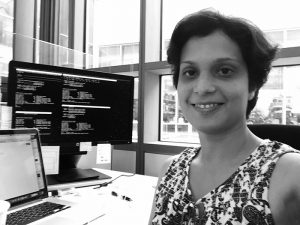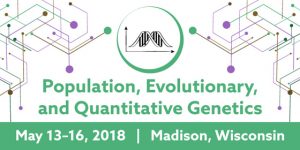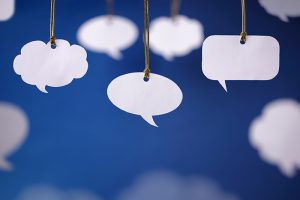Enter your address to receive notifications about new posts to your email.
Featured
-
Featured
Getting to work
Turning vision into reality takes work—that much is obvious. But anyone who has written a proposal of any sort will realize that a coherent vision doesn’t appear out of thin air. It must be carefully crafted from an initial collection of goals, ideas, and ideals. This year, GSA’s staff, leadership, and membership are working hard…
-
Featured
Jeanne Garbarino: I found my place in science outreach
As Director of RockEDU Science Outreach at The Rockefeller University, Jeanne Garbarino promotes equitable access to science and fosters a genuine connection with science in our society. Along with her team, she creates innovative resources and educational programs that inspire an appreciation for the scientific process. In the Decoding Life series, we talk to geneticists with diverse…
-
Featured
How an earthquake shook up stickleback genomes
New genetic data help explain the rapid adaptation of stickleback fish that invaded freshwater habitats in the 1960s. In 1964, an earthquake shook the islands off the coast of Alaska, transforming the landscape as underwater terraces were thrust above the surface. From this cataclysmic event emerged a series of freshwater pools that became a natural…
-
Featured
Sujal Phadke on finding work-life balance in non-profit research
Sujal Phadke is a staff scientist and evolutionary biologist at the J. Craig Venter Institute who finds not-for-profit research a supportive environment for early career investigators. In the Decoding Life series, we talk to geneticists with diverse career paths, tracing the many directions possible after research training. This series is brought to you by the GSA Early Career…
-
Featured
A day in the mouth
Rapid genomic changes observed in Candida albicans soon after exposure to the oral cavity. Whether or not you treat your body like a temple, it presents a hostile and rapidly-changing environment for the many microorganisms that call you home. In contrast to the microbes that hang out inside humans, those that are cultured in the…
-
Featured
Videos from PEQG18 Keynote and Crow Award sessions
Watch presentations from the conference, including talks from Katie Peichel and Jonathan Pritchard. Now that the dust has settled from the whirlwind of the first ever standalone GSA Population, Evolutionary, and Quantitative Genetics Conference (PEQG18), we’re delighted to be able to share the audio and synched slides from the Keynote and Crow Award sessions. We’re…
-
Featured
Namrata Sengupta on believing in the power of your own story
Science Communications Officer Namrata Sengupta is building a career at the Broad Institute of MIT and Harvard by breaking down complex science for the public. Crafting her PhD training, she transitioned from conducting research to aiding scientists in sharing their research stories. In the Decoding Life series, we talk to geneticists with diverse career paths, tracing the…
-
Featured
An updated tool for finding the footprints of selection
diploS/HIC uses machine learning to identify selective sweeps in unphased data. A set of footprints can tell us a lot about the creature that left them—without requiring us to see the creature itself. Footprints can suggest the animal’s size, weight, and stride, and from there, we can extrapolate even more information. Much like soft sand…
-
Featured
Blue skies and listening for change
As scientists, we do a lot of talking. Whether presenting at conferences, engaging during meetings, or discussing the latest results with lab members—there is a lot to talk about! But it is at least as important to make time for listening in order to keep pace with scientific advances and to take the pulse of…
-
Featured
GSA Journals Spotlight 2017
The GSA Journals, GENETICS and G3: Genes|Genomes|Genetics, are proud to present our annual Spotlight booklets for research published in 2017. Each Spotlight is a showcase of the excellent research and scholarship published over the course of the year, along with a selection of striking images submitted by our authors. Browse the 2017 GENETICS Spotlight. Browse the 2017 G3 Spotlight.
-
Featured
Colleen Cuffaro on the journey from bench to business
As a Principal at venture capital firm Canaan, Colleen Cuffaro works to identify biopharmaceutical companies that have the next big idea in drug development. In the Decoding Life series, we talk to geneticists with diverse career paths, tracing the many directions possible after research training. This series is brought to you by the GSA Early Career Scientist Career…











